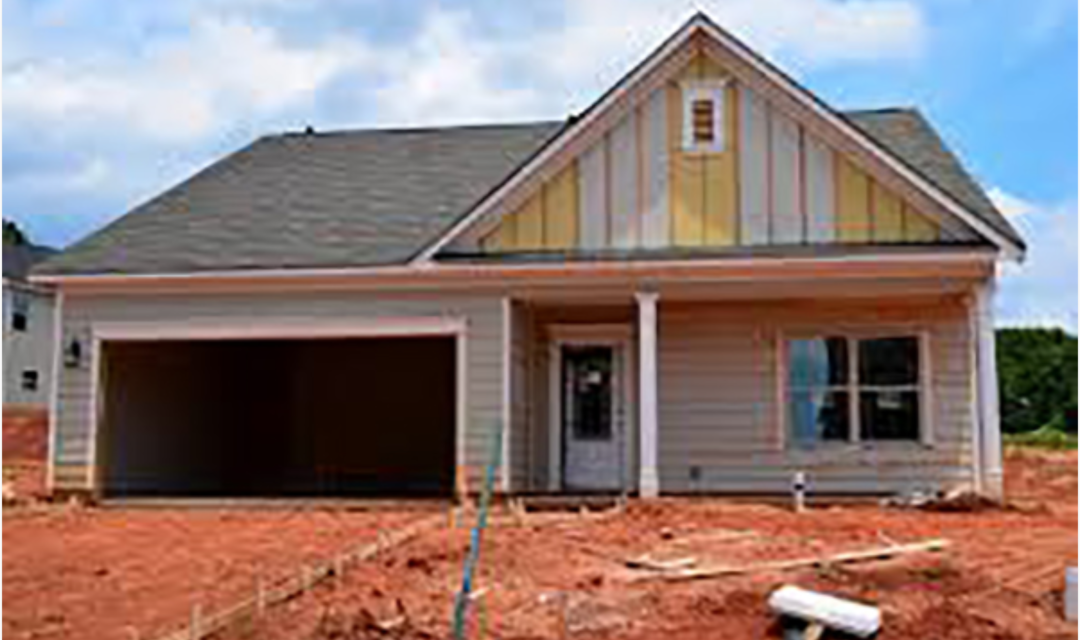The housing shortage, particularly the shortage in affordable homes, is a topic frequently discussed by the Greensboro City Council.
According to an article in The Hill, the Greensboro-High Point market is doing worse at providing single-family homes than the peer cities in North Carolina covered by the study, but much better than cities in other parts of the country.
The article states, “The data compares supply and demand by the number of permits issued for every new job. One single family permit is issued for every two new jobs in a balanced market.”
And adds, “One piece of the broader shortage puzzle is the underproduction of single-family homes often stemming from land restriction policies.”
According to the data from the National Association of Realtors (NAR), the Greensboro-High Point market is adding 4.4 jobs for each new single-family home building permit, so the number of building permits issued would need to more than double for the Greensboro-High Point market to be considered balanced.
The Durham-Chapel Hill market isn’t far behind with 3.8 jobs for each single-family building permit. But Raleigh is close to being right on the money with 1.9 jobs per building permit.
Charlotte-Concord-Gastonia has 2.9 jobs per single family building permit and Fayetteville is listed at 2.1 jobs per building permit.
Right next door, Winston-Salem is listed as issuing a building permit for every 1.7 new jobs.
However, all the cities listed in North Carolina are doing far better than some of the cities in the Northeast. According to the report, the New York-Newark-Jersey City market is issuing one building permit for every 37.6 new jobs.
And the Boston-Cambridge-Nasua metro area is at one building permit for every 28.6 new jobs.
Rockford, Illinois – roughly half the size of Greensboro – issues one building permit for every 32.2 new jobs.
The NAR estimates the national housing shortage at 5 million homes in a period when new housing construction is falling, in part due to the much higher mortgage rates caused by the Federal Reserve raising interest rates.


The solution is social housing. Guilford County should follow Montgomery County, Maryland’s lead and develop an office for the financing, production, maintenance and most importantly ownership of housing. This would allow them to keep producing housing even as interest rates increase which would keep more people employed and they could set the rental rates at a level that’s affordable, not simply the most profitable. It’s time to do what works.
Social housing is a euphemism for government housing (think HUD). It creates another government bureaucracy at the local level and is paid for with taxpayer money. The City of Greensboro and Guilford County cannot afford “social housing.” Montgomery County is outside Washington DC and has its own unique problems with housing. Using the formula to determine housing needs as outlined in Rhino’s article does not take into consideration the type of jobs created causing a need for additional housing, which is a window into the local economy. It is usually the lazy and unimaginative elected officeholder who turns to government to fix a problem. Why would we want to follow in the footsteps of European countries that have had “social housing” for many years?
Part of the solution to “social housing” is: Don’t spend all your money on TVs and phones and cars when you can’t afford a place to live. Go into any of the many projects around Greensboro and note the cars, top of the line phones and 80″ TVs stuffed into tiny government financed apartments. Some people do not budget for housing because they are getting it provided by the taxpayer.
I don’t care about the NE…Greensboro has never been friendly to builders or businesses. But most folks continue to vote in the same old same old. Guess you get what you vote for.
right! So who is responsible for the govt we have?
Vote!
Aren’t statistics fun? They can be skewed to any result that is being paid for. The Hill referenced statistics in the article are nonsense trying to correlate building permits to jobs, when we all know it’s climate change related…Sarc. Builders aren’t building locally in the $200k range because of land and development costs.
Perhaps the city and county should stop using taxpayer money as bribes to get businesses to come to our area when we don’t have the people, infrastructure, schools, emergency services, animal control, medical and hospital needs, or housing to fulfill the employment needs those businesses require. It seems that they could do “studies” to determine the resultant burden on all services that bringing new business into our area causes and decide to use taxpayer money to improve services instead of paying bribes to the new businesses for relocating here.
Right on. Govt meddling squared.
Step aside and get out of my way.